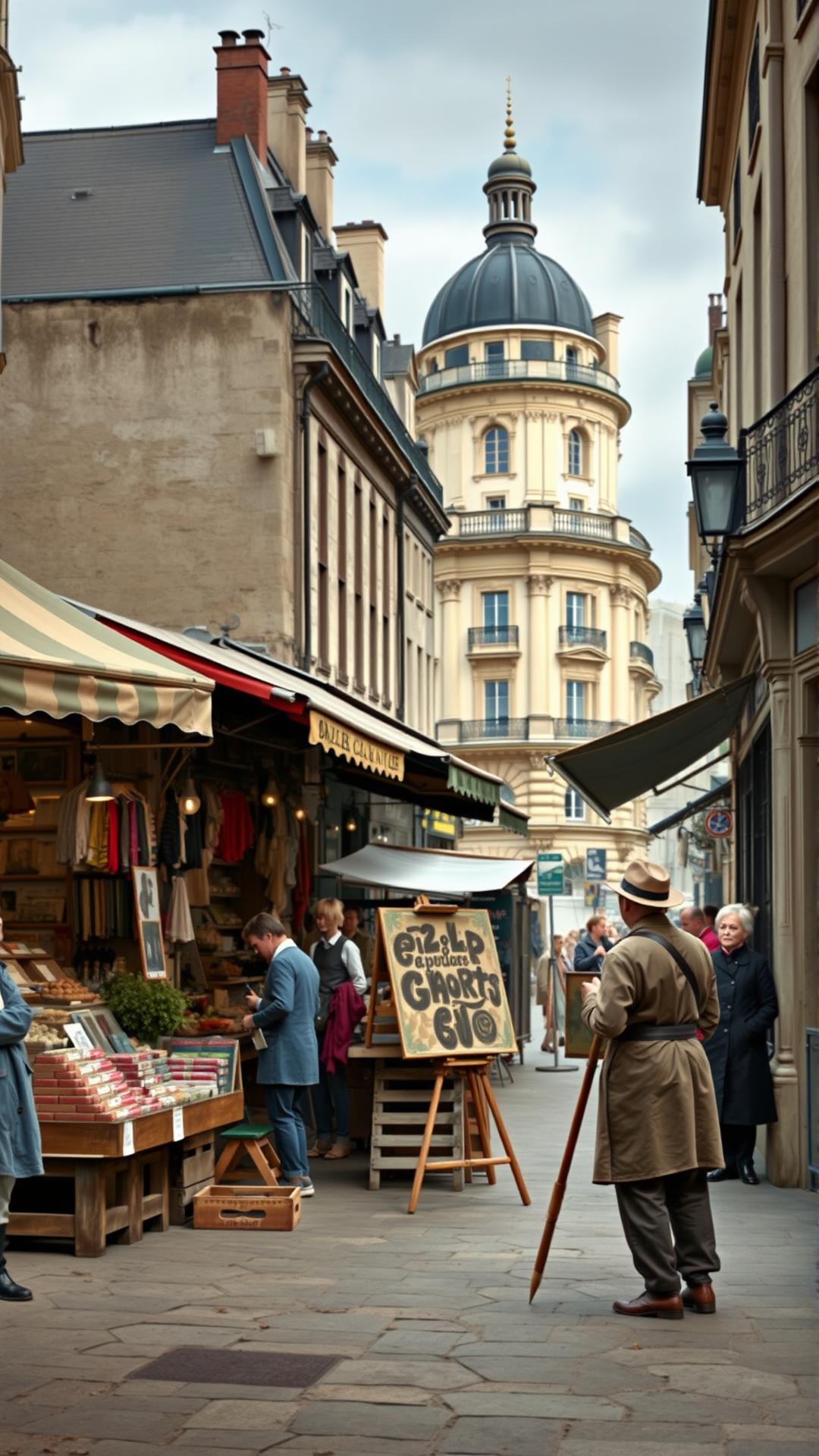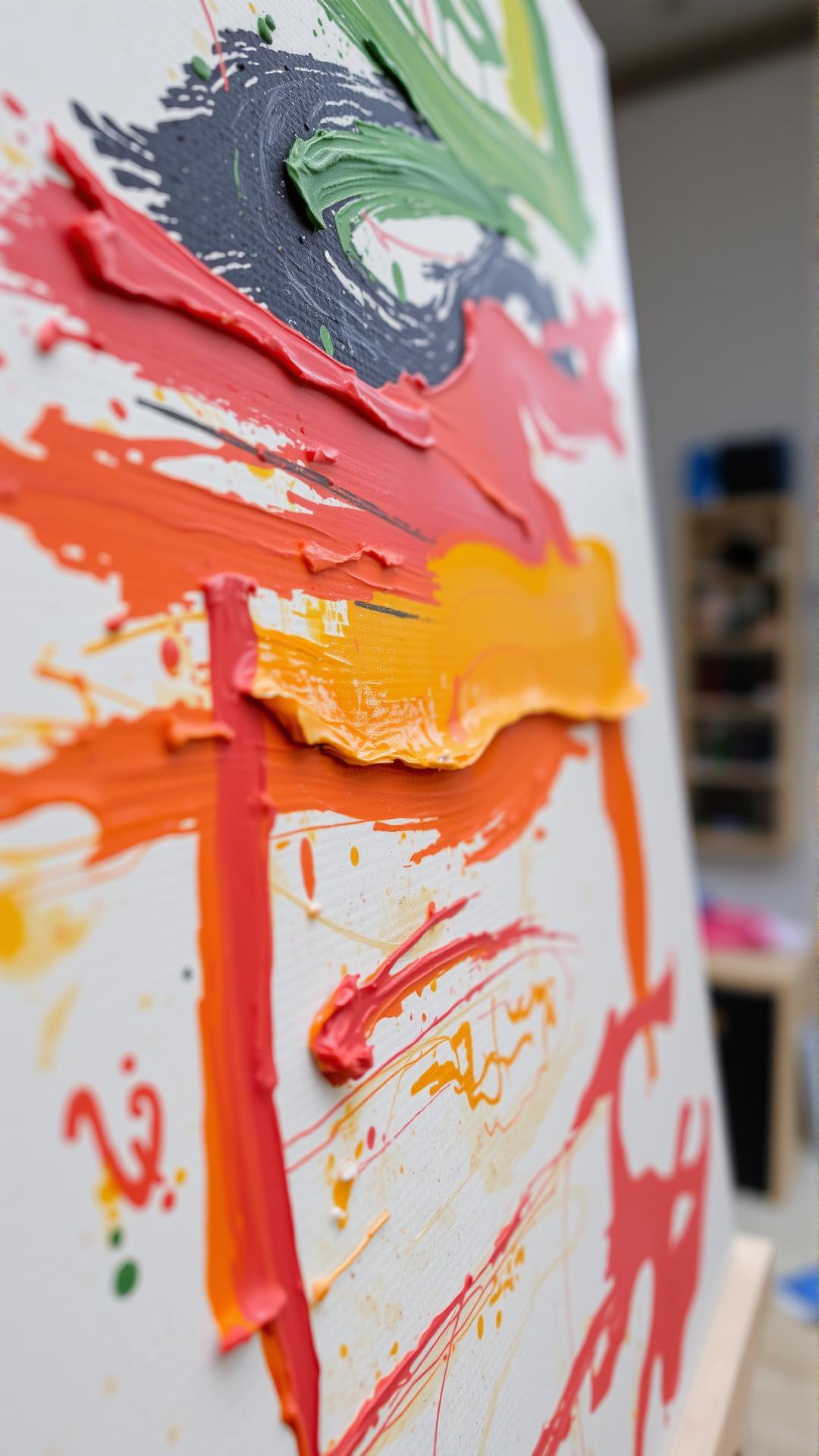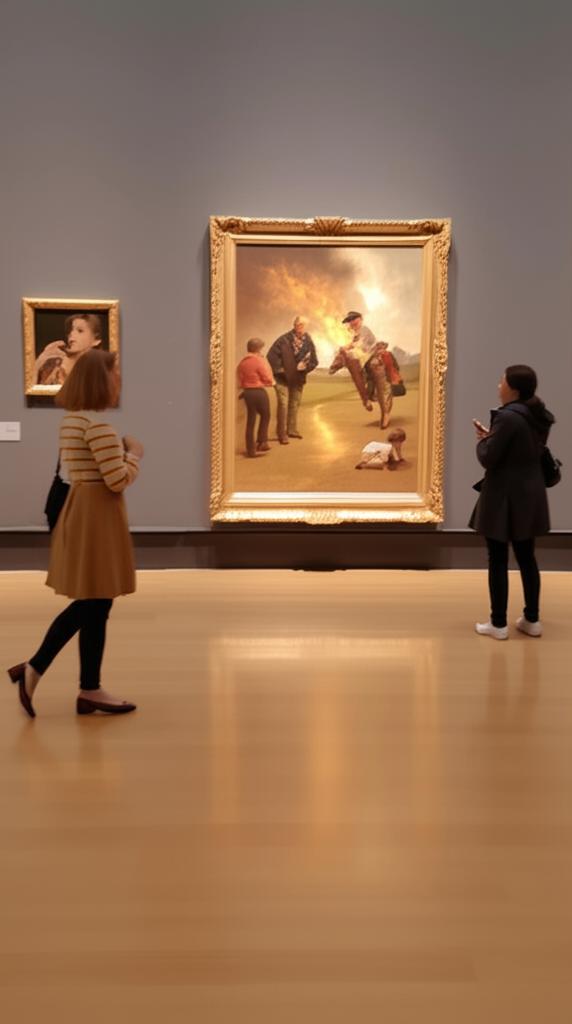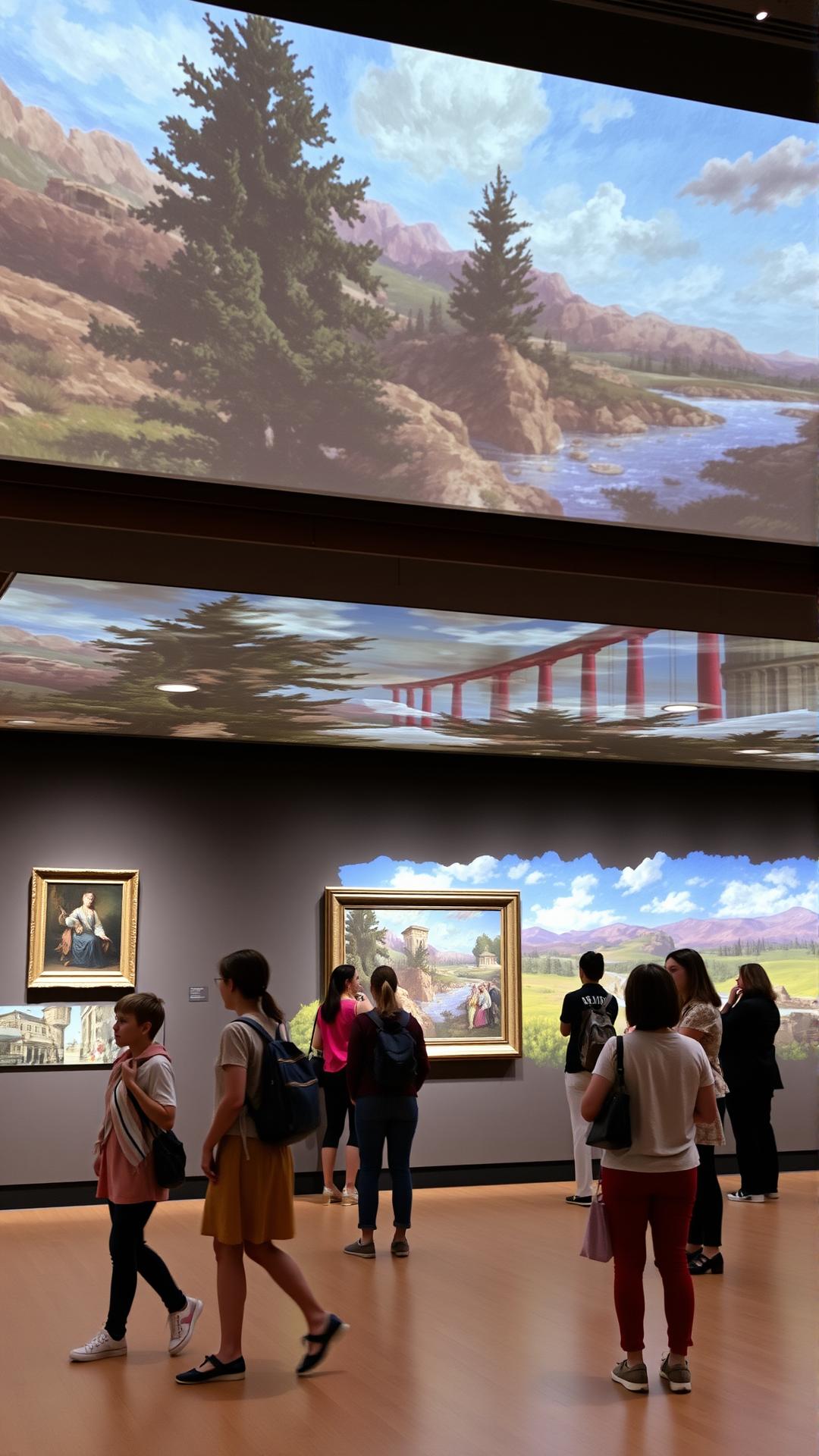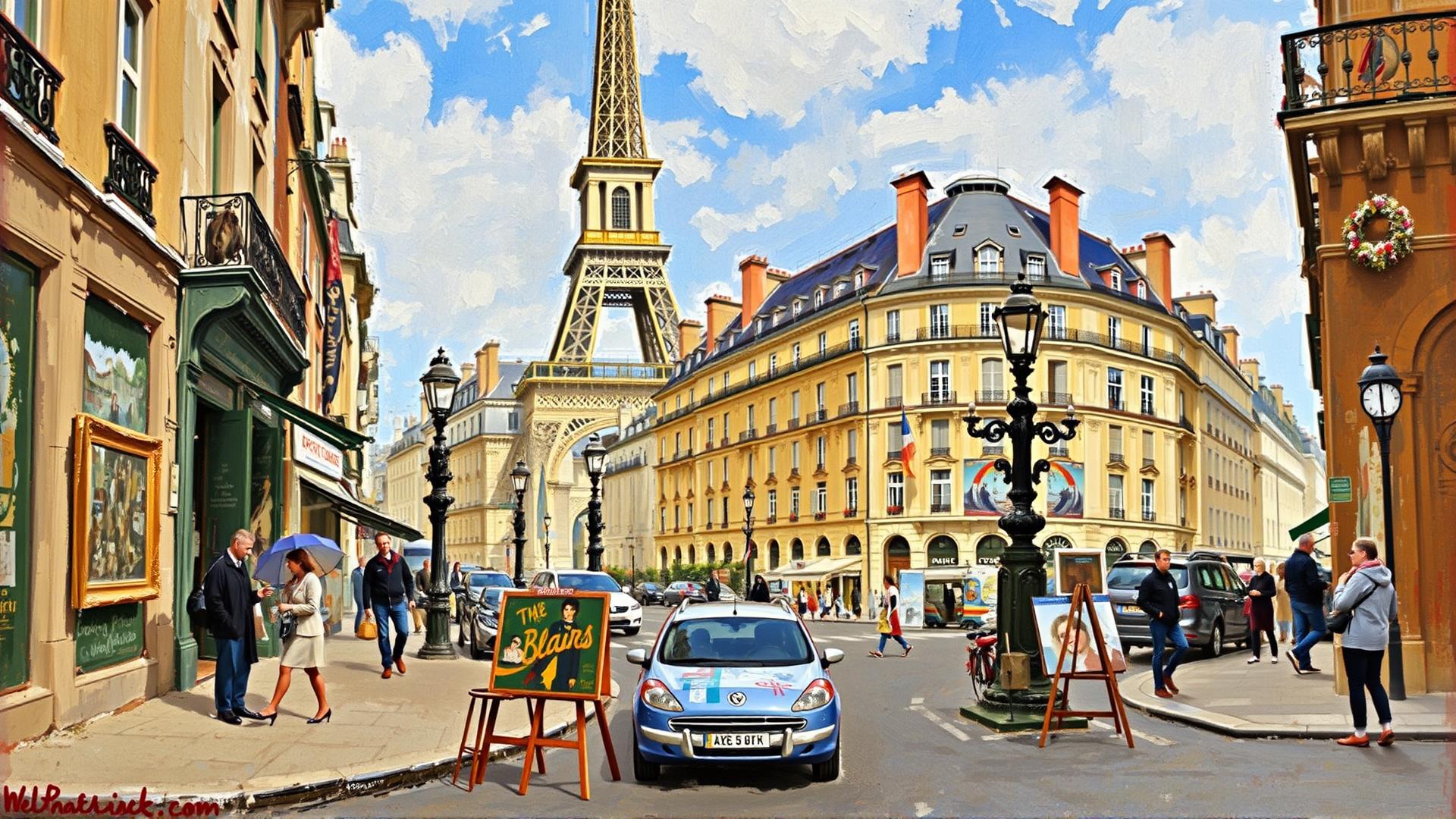
Reviving Emotions Through Timeless Impressionist Paintings
Introduction
Impressionist paintings represent a revolutionary art movement that emerged in the late 19th century, captivating audiences with vibrant colors and dynamic light effects. Artists like Claude Monet and Pierre-Auguste Renoir broke free from traditional techniques, highlighting ordinary moments in a way that invites viewers to feel rather than just see. Central to this movement is the ability to evoke emotion, allowing observers to connect with the artwork on a personal level. The play of light and color in these masterpieces not only captures fleeting moments but also integrates emotional undertones that resonate deeply within us.
The Impressionists’ unique approach to painting en plein air allows them to capture the essence of their subjects in the natural world. This organic representation often promotes feelings of tranquility and nostalgia, rekindling emotions long lost in the rush of modernity. This article delves deeper into the world of Impressionist paintings, exploring how they revive emotions and offer timeless connections to the human experience. We will discuss the historical context, key characteristics, and emotional responses elicited by Impressionist art, revealing its enduring legacy in the contemporary art scene.
Origins of Impressionism Historical Context and Societal Changes in 19th Century France
Impressionism, a groundbreaking art movement that emerged in the late 19th century, found its origins amidst a rapidly evolving French society. The backdrop of this transformation was marked by significant changes in economics, politics, and culture. The industrial revolution brought about urbanization, leading people to migrate from rural areas to cities in search of better opportunities. This influx shifted the social fabric of France, giving rise to a new class of workers and a burgeoning middle class that began to redefine aesthetic norms.
The rise of Paris as a center of artistic innovation coincided with the decline of traditional academic painting, which adhered strictly to classical ideals. Artists were increasingly frustrated with the rigid constraints imposed by the Académie des Beaux-Arts. This discontent drove a group of painters, including Claude Monet, Édouard Manet, and Pierre-Auguste Renoir, to seek alternative methods of expression that captured their immediate experiences and observations.
By the 1860s, social conditions had further stirred the creativity of these artists. The effects of modern life became palpable: bustling streets filled with commuters, leisure activities in parks, and the vibrant aura of the urban landscape were ripe for visual exploration. Impressionists turned their gaze toward these fleeting moments, aiming to encapsulate the ephemeral quality of light and atmosphere rather than focus on meticulously detailed subject matter or well-structured compositions.
The 1874 exhibition, which would coalesce as the first Impressionist exhibition, served as a critical turning point. Critiques initially dismissed this style as unfinished and chaotic, with paint being applied in visible strokes that lacked the polish of traditional methods. However, these so-called “impressionists” persisted, believing that the essence of a scene could be captured through innovative techniques of color and light.
Societal shifts fueled by modernity, such as a growing interest in leisure and the representation of ordinary life, pushed Impressionists to break away from historical or mythological themes. They depicted scenes that resonated with a contemporaneous audience, allowing emotions and experiences derived from everyday moments to take center stage. Thus, the origins of Impressionism are rooted not just in artistic vision but in a complex interplay of social, economic, and cultural transformations that redefined art in 19th century France.
Core Characteristics Defining Impressionist Paintings Through Brushwork Color Palettes and Composition
Impressionism, a revolutionary art movement that emerged in the late 19th century, is characterized by its distinctive techniques and approaches which communicate emotions as effectively as the subjects themselves. Among the essential characteristics defining Impressionist paintings, brushwork stands out as a hallmark of the style. Rather than employing the smooth, blended strokes characteristic of Academic painting, Impressionist artists embraced a more spontaneous and vigorous application of paint. Visible brushstrokes—often thick and textured—contribute to the overall sense of movement and energy, inviting viewers to engage with the artwork on both an emotional and cognitive level.
The deliberate use of vibrant color palettes is another defining trait of Impressionism. Artists sought to capture natural light and its effects on color, often painting en plein air to observe the changing ambiance of the scene. This resulted in works filled with bright, unmixed colors laid side-by-side. The colors often reflect the atmosphere within the painting, evoking feelings that range from tranquility to exhilaration. The avoidance of somber shades in favor of luminous blues, greens, and yellows allows these paintings to resonate emotionally, encouraging viewers to experience a sense of joy or nostalgia.
Composition in Impressionist paintings is marked by a departure from traditional arrangements that emphasized symmetry and perspective. Instead, artists like Monet, Renoir, and Degas favored asymmetrical compositions that convey the spontaneity of everyday life. Placing subjects off-center or cropping them creates a sense of immediacy, transforming ordinary scenes into dynamic visual narratives. This emphasis on realistic moments allows the viewer to feel as though they are part of the scene, enhancing the emotional engagement with the artwork.
Impressionist artists frequently depicted scenes of leisure, nature, and social interactions, allowing for an exploration of human emotions within their environments. The subjects chosen—whether a serene landscape, a bustling café, or a fleeting moment between friends—bring forth a depth of feeling that aligns closely with the movement’s overarching goal: to evoke emotion through visual representation. This emotional nuance remains relevant in contemporary interpretations of Impressionism, as it continues to inspire viewers to reconnect with their own feelings and memories.
The Emotional Resonance The Depths of Impressionist Art and Emotional Responses
Impressionist paintings resonate deeply with viewers, often provoking a rich array of emotional responses. This artistic movement, characterized by its unique brushwork and vibrant color palettes, creates a sensory experience that invites individuals to connect with their own feelings. Psychological research supports the idea that art can evoke emotions through various mechanisms, and Impressionism excels in this realm.
The intimate portrayal of everyday life in Impressionist works invites viewers to engage on a personal level. Painters like Claude Monet and Pierre-Auguste Renoir focused on capturing fleeting moments, the changing qualities of light, and the essence of nature. This emphasis on transitory beauty resonates with the human experience, as emotions can be as ephemeral as the scenes depicted. When individuals observe a soft sunrise in Monet’s “Impression, Sunrise,” many report feelings of tranquility and nostalgia. These emotional responses stem from our inherent connection to nature and the environment.
The use of color plays a pivotal role in shaping the viewer’s emotional reaction. The Impressionists often employed techniques that emphasized brightness and saturation, which can enhance the feelings of joy and vibrancy. Research indicates that specific colors can evoke distinct emotions; for example, warm hues like reds and yellows can elicit feelings of happiness or warmth, while cooler colors may induce calm or sadness. Thus, the color choices made by Impressionist artists significantly enhance the emotional landscape of their works.
Empathy also forms a crucial component of the emotional impact of Impressionism. The focus on human figures in relatable settings inspires viewers to project their own experiences and feelings onto these scenes. Renoir’s depictions of people enjoying leisurely afternoons can evoke a sense of longing or joy, drawing individuals into a shared moment of life. Art can serve as a mirror reflecting our emotions, and Impressionism’s emphasis on interpersonal interactions engages this empathetic connection.
Studies in psychology suggest that engaging with art, especially emotionally resonant pieces, can lead to cathartic experiences, offering solace and fostering emotional well-being. Thus, Impressionist paintings act as conduits for eliciting and reviving emotions, providing viewers not just with aesthetic beauty, but also with a profound emotional experience. This intricate dance between viewer and artwork creates a lasting bond that continues to breathe life into the wonders of Impressionism.
Iconic Works and Artists The Emotional Depth of Impressionism
Significant Artists and Their Masterpieces
Impressionism, with its radical approach to art, has given birth to a myriad of masterpieces that resonate deeply with the human experience. Among the pivotal figures in this movement, Claude Monet stands out for his ability to capture the ephemeral aspects of light and color. One of his most celebrated works, *Impression, Sunrise*, encapsulates the essence of this movement. The painting evokes feelings of tranquility, showcasing the interplay between light and water at dawn. Here, the viewer is invited to lose themselves in the moment, feeling the gentle embrace of the morning haze.
Another emblematic artist, Pierre-Auguste Renoir, infused his works with warmth and vibrancy. His painting *Luncheon of the Boating Party* is alive with laughter and joy, portraying a group of friends enjoying a sunny afternoon on the Seine. This piece goes beyond mere representation; it captures the emotional camaraderie of the scene, inviting viewers to sense the fleeting joy of shared moments. Renoir’s brushstrokes seem to dance with life, reminding us of the beauty found in everyday interactions.
Edgar Degas, often associated with the grace of ballet, created works that reveal an intimate understanding of movement and emotion. In *The Dance Class*, the posture and expressions of the dancers convey not only the physicality of their art but also the rigorous dedication required to achieve their proficiency. The blending of reality and aspiration in this painting evokes a deep appreciation of the sacrifices made in pursuit of beauty, instilling a sense of respect and admiration in viewers.
Camille Pissarro, known for his landscape paintings, transmits feelings of peace and nostalgia through his works. *The Boulevard Montmartre, Spring* encapsulates the vibrancy of city life while simultaneously invoking a sense of yearning for simpler times. The color palette and composition invite viewers to reflect on their own experiences, providing an emotional connection to the bustling yet serene moments found in urban existence.
These artists, with their distinct styles and subjects, create a tapestry of emotional experiences that transcends time. Their masterpieces serve as vital conduits through which contemporary audiences can access the indescribable emotions tied to memory, joy, and human connection, reinforcing Impressionism’s enduring legacy in the world of art.
Impressionisms Influence on Modern Art
Impact of Impressionism on Contemporary Art Movements
Impressionism, born in the late 19th century, set in motion an artistic revolution that reshaped the landscape of art for generations to follow. Its embrace of spontaneity, vibrant color palettes, and the portrayal of light laid the groundwork for a multitude of contemporary art movements, from Post-Impressionism to Abstract Expressionism. These movements have borrowed from Impressionism’s techniques, philosophies, and emotional resonance, demonstrating its enduring relevance in today’s artistic expressions.
Contemporary artists often draw upon the core tenets of Impressionism—momentary impressions and capturing the essence of a fleeting moment. This connection is evident in the works of artists who explore environmental themes and human experiences, echoing the Impressionists’ focus on the natural world and everyday life. By using similar brushwork and color dynamics, modern painters imbue their pieces with the immediacy that characterized the Impressionist form. In this way, the influence of Impressionism can be seen in the dynamic strokes of artists who favor expression over realism, suggesting movement and emotion through color and technique.
Impressionist principles have permeated various other media beyond painting, including photography, sculpture, and even performance art. The Impressionist fascination with light and atmosphere has inspired photographers to capture images that reflect transient moments, while sculptors turn to materials that can evoke similar feelings of ephemerality. This transcendence of traditional boundaries highlights how Impressionism has not only influenced painters but also resonates across different forms of creative expression, underscoring its comprehensive impact on the visual arts in contemporary settings.
The thematic exploration of subjective experience and personal narrative in contemporary art owes a debt to Impressionism. Artists today often focus on emotional depth and the intricacies of human relationships, akin to the Impressionists’ explorations of fleeting moments shared between people, nature, and the environment. This emphasis on emotion over strict representation reveals the lasting legacy of Impressionist philosophy, encouraging modern creatives to prioritize personal perspective and viewer connection.
As contemporary art continues to evolve and respond to societal narratives, the Impressionist movement remains a foundational influence. Its ability to evoke a wide range of emotions through light, color, and composition retains its relevance, allowing today’s artists to fuse the past with the present in compelling new expressions. Impressionism’s ethos of capturing the essence of transient experiences ensures that its impact resonates profoundly within the ever-changing realm of modern art.
Experiencing Impressionism Today Engaging with Emotional Depths
Immersive Experiences of Impressionist Art
In contemporary settings, engaging with Impressionist paintings has evolved well beyond traditional gallery visits. Modern audiences are increasingly seeking immersive experiences that not only showcase the artwork but also evoke strong emotional responses. Museums and art organizations have embraced multimedia approaches, integrating virtual reality and augmented reality into their exhibitions. This technology allows viewers to step inside the paintings, enabling them to interact with the landscapes and figures that once seemed constrained to canvas.
Another innovative way to experience Impressionism today is through art installations. Pop-up exhibitions dedicated to the works of Monet, Renoir, and Degas often incorporate soundscapes and strategically designed lighting to enhance the viewer’s emotional journey. These installations create moments of connection between the viewer and the art, allowing one to feel the dynamism of a bustling Parisian street or the tranquility of a sunlit garden.
Artistic Workshops and Community Engagement
Beyond the immersive experience, workshops focused on Impressionist techniques offer individuals a hands-on approach to understanding the emotional depth of this artistic movement. Participants who engage in painting classes inspired by Impressionist styles often find that replicating the techniques allows them to tap into their own emotions and artistic expressions. The act of creating art encourages personal reflection, often revealing feelings that resonate deeply with the origins of the Impressionist era.
Community art programs emphasize the social aspect of Impressionism. By organizing group visits to museums followed by discussions and art-making sessions, participants foster a sense of belonging and shared emotional exploration. These communal experiences highlight the threads connecting viewers through shared history and emotional resonance.
Social media platforms have transformed how art is consumed and discussed. Impressionist paintings are frequently shared, reinterpreted, and discussed among diverse audiences online. Users engage with the art through comments, sharing their impressions—both literally and figuratively—of how these timeless works resonate with their current experiences. This modern dialogue keeps the emotional core of Impressionism alive, ensuring that its essence continues to inspire and evoke passion in a new generation.
The Future of Impressionism Reviving Emotions Through Timeless Masterpieces
Imagining the Legacy of Impressionism
The legacy of Impressionism holds immense potential for shaping the future of artistic expression. As contemporary artists and art lovers immerse themselves in the emotional landscapes captured by Impressionist painters, they might find inspiration that transcends time and convention. The influence of these masterworks is likely to evolve, guiding new generations to approach their creations with a similar sensibility, emphasizing feelings and perceptions over strict realism.
Emerging artists may harness the bold brushstrokes and vibrant palettes of Impressionist pioneers like Monet or Degas to craft works that resonate with modern-day experiences. This could manifest in innovative techniques, where traditional methods meet new media. For instance, digital art could incorporate elements reminiscent of Impressionist styles, inviting viewers to engage not only visually but emotionally with the work.
Inspiring Emotional Engagement in Tomorrow’s World
The virtual reality, augmented installations, and immersive experiences could further enhance how audiences connect with art. Imagine stepping into a virtual Monet garden, where the impressions of light and color envelop the viewer, creating a participatory experience akin to walking through a living painting. Such technology could revitalize the emotional core of Impressionism, allowing individuals to forge personal connections with the art they love.
The rise of community-driven art initiatives might also cultivate an environment where collective emotional experiences are shared. Art festivals and public installations, inspired by Impressionist principles, could serve as platforms for collaboration, bringing together diverse voices and backgrounds. This inclusivity can deepen the appreciation for Impressionism’s emotional landscapes while reverberating with contemporary cultural dialogues, emphasizing shared experiences and narratives in a fractured world.
Young artists, excited by the possibilities offered by Impressionism, may craft stories rooted in their own emotions, reflecting issues such as climate change, social justice, or the impact of technology on the human experience. By grounding their work in the deeply humanistic themes of the past while addressing the pressing concerns of the present, the future of Impressionism stands to not only survive but resonate more powerfully than ever before.
Conclusions
It’s evident that this artistic movement has left an indelible mark on both art history and human emotion. By capturing transient moments of beauty and light, Impressionists invite viewers into a world where feelings take center stage. The use of vibrant colors and innovative techniques serves not only as a mechanism for visual representation but also as a conduit for emotional expression that resonates across generations.
The revival of emotions through Impressionist artworks is a testament to their timeless nature. As we reflect on the works of artists like Monet and Degas, we recognize that their paintings continue to speak to us. They encourage introspection, emotional understanding, and a greater appreciation for the beauty presented in everyday life. Thus, Impressionism remains a vital part of our cultural landscape, inspiring new artists to explore emotion beyond the boundaries of expression.


